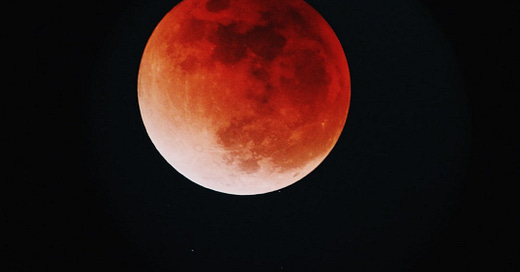How to Capture the Blood Moon with Your Smartphone
PCVs in Central and South America can see it on March 13-14, 2025
As Peace Corps volunteers serving around the world, many of you will have the opportunity to witness the spectacular total lunar eclipse (or "blood moon") happening on March 13-14, 2025. This celestial event only comes around every few years, making it a perfect moment to capture and share with friends, family, and your local community. So, if your serving in Central and South America, you'll be able to see the entire eclipse!
And the good news? You don't need professional camera equipment to get impressive photos of this astronomical event. Your smartphone can capture stunning images with the right techniques. Here's how to make the most of this opportunity with the device you already have in your pocket.
Understanding the Eclipse Timeline
Depending on your location, the visibility and timing of the eclipse will vary:
- In South America, you'll be able to see the complete eclipse, with the maximum "blood moon" appearance occurring around 3:00 AM EDT on March 14 (midnight PDT on March 13).
You can check here for more information.
Essential Preparation Tips
1. Scout Your Location in Advance
Find a spot with minimal light pollution and a clear view of the night sky.
Consider including interesting foreground elements from your host community (landmarks, landscape features) to make your photos unique.
2. Prepare Your Equipment
Clean your phone's camera lens thoroughly.
Bring a portable power bank (eclipse photography can drain your battery).
Most important: Find or create a steady support for your phone. Options include:
A small tripod with phone mount (even inexpensive ones work well)
Improvised support (propping against a water bottle, bag of rice, etc.)
A selfie stick that can stand independently
Camera Settings and Techniques
Basic Approach (Any Smartphone)
1. Avoid digital zoom - It reduces image quality. Instead, capture a wider shot and crop later.
2. Use night mode if your phone has it.
3. Set a timer (3-10 seconds) to avoid camera shake when pressing the button.
4. Focus manually by tapping on the edge of the moon on your screen.
5. Adjust exposure by sliding up or down after tapping to focus (usually indicated by a sun icon).
Advanced Settings (Newer Smartphones)
For iPhone users:
If you have a Pro model with telephoto lens, use it.
Enable ProRAW in Settings > Camera > Formats (if available).
In the camera app, tap the RAW button in the corner when shooting.
For Android users:
Samsung Galaxy users should try the Expert RAW mode.
Google Pixel users should use Night Sight mode and enable Astrophotography mode.
Most Android phones have a "Pro" or "Manual" mode that allows adjusting ISO and shutter speed.
Post-Processing Tips
Simple edits can dramatically improve your moon photos.
Try adjusting contrast and clarity to bring out crater details.
Slightly reduce highlights and boost shadows to enhance the red color.
Free apps like Snapseed offer powerful editing tools accessible to beginners.
Cultural Connections
As Peace Corps volunteers, consider using this opportunity to:
Host a small viewing event with your host community.
Learn about local folklore or cultural significance of lunar eclipses.
Share scientific explanations while respecting cultural interpretations.
Document not just the moon but the community experience of watching it.
Final Tips
Take multiple shots throughout the eclipse phases.
Remember that even if your photos don't turn out perfectly, the experience itself is valuable.
Share your results with the Peace Corps community using #PCVBloodMoon2025.
The blood moon offers a unique chance to connect with your host community through shared wonder at the night sky. Even with limited equipment, you can capture beautiful memories of this special event that will last long after your service ends.
For more tips like this, subscribe and also check out WanderingTheWorld.com
Reference:




